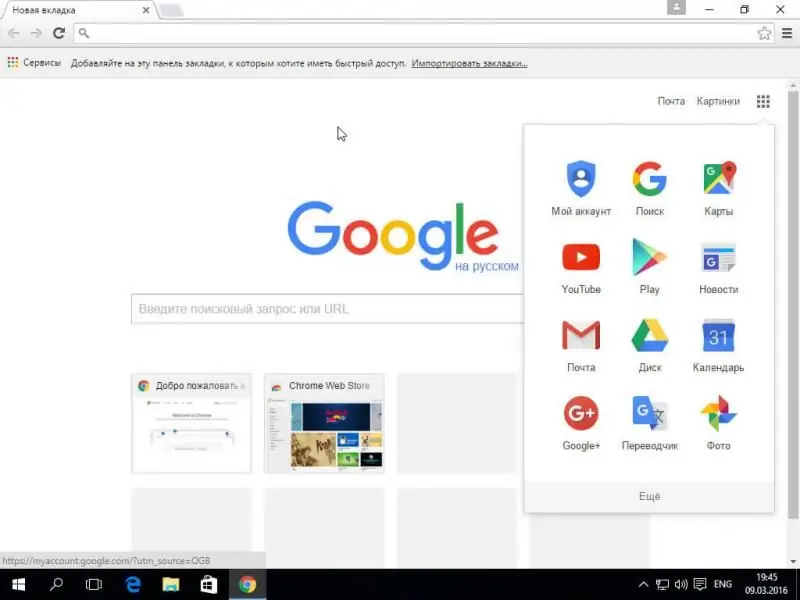
Table of contents:
- Author Bailey Albertson [email protected].
- Public 2023-12-17 12:53.
- Last modified 2025-01-23 12:41.
Solving problems with opening pages of the Google Chrome browser
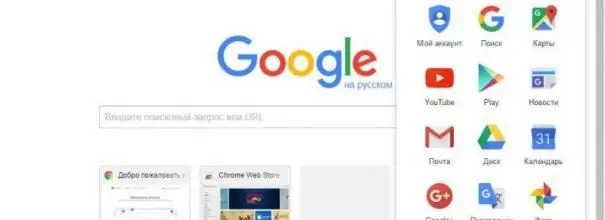
Users often have problems when website pages stop loading on a particular browser. This often happens after installing some third-party program, infecting the computer with a virus, connecting to a new provider. If you find the cause correctly, then it will not be difficult to eliminate it.
Content
-
1 Why Google Chrome won't open pages
- 1.1 No network connection
- 1.2 Problems due to viruses
- 1.3 Browser conflict with antivirus / firewall
- 1.4 The path for the shortcut is incorrect
-
2 Solving the problem
- 2.1 Computer restart
- 2.2 Checking for viruses
- 2.3 Checking the file path
- 2.4 Cleaning your computer from debris
- 2.5 Clearing the cache
- 2.6 Video: Clearing the Cache in Google Chrome
- 2.7 hosts file
- 2.8 Video: Editing the Hosts File
- 2.9 Changing DNS servers
- 2.10 Cleaning the registry
- 2.11 Reset TCP IP Parameters
- 2.12 Reinstall Browser
- 2.13 Video: Installing the Google Chrome Browser
Why Google Chrome won't open pages
Let's take a look at the top reasons why the Chrome browser might not open websites.
No network connection
To check if there is a network connection:
- try to go to some site from another browser, if the page is loaded - there is a network connection;
-
look at the connection icon on the taskbar, in the lower right corner of the screen, if there is a yellow exclamation mark on it, then the network connection is limited;

Task bar If the connection icon has a yellow exclamation mark, then the network connection is limited
-
look at your Wi-Fi router, if one of the lights is yellow, then there is no network connection.

Wi-Fi router One of the lights on the router is yellow
Problems due to viruses
Very often, access to the Internet through Google Chrome is difficult due to viruses. Malicious programs can change the browser's launch parameters or delete any important startup files, preventing the browser from loading the web page. It is very easy to check your PC for viruses. More on this will be written below.
Browser conflict with antivirus / firewall
Often times, access to sites is blocked by your antivirus or firewall software. They can deny all inbound and outbound traffic if configured incorrectly. To check it is enough just to turn off the antivirus or firewall for a while.
To turn off the firewall:
-
Click on the magnifying glass search button in the lower left corner of the screen.

Desktop Click on the search button highlighted in red
-
In the input field that appears, enter "Firewall".

Windows desktop In the field that appears, highlighted in red, enter "Firewall"
-
In the list of search results, select Windows Defender Firewall.

Desktop with search bar In the list of search results, select "Windows Defender Firewall" highlighted in red
-
In the window that appears, in the list on the left, select "Turn Windows Defender Firewall on or off."

Windows Defender Firewall window Select "Turn Windows Defender Firewall on or off" indicated by the red arrow
-
In the window that opens, select "Disable Windows Defender Firewall" for private and public networks.

Customize Settings Window In the window that opens, select the "Disable Windows Defender Firewall" highlighted in red
-
Click "OK" to confirm.

"Configure parameters" Press the "OK" button highlighted in red to confirm
Disabling your antivirus is much easier. The following instruction is suitable for all popular antiviruses:
-
Click on the "Show hidden icons" button in the form of an up arrow in the lower right corner of the screen.

Windows taskbar Click on the "Show hidden icons" button highlighted in red
-
In the list that appears, right-click on the icon of your antivirus.

Windows taskbar In the list that appears, right-click on the icon of your antivirus highlighted in red
-
In the context menu that opens, select the "Pause protection …" item.

Taskbar with hidden icons In the context menu that opens, select the "Pause protection …" item highlighted in red
The path of the shortcut is spelled incorrectly
Due to viruses or user errors, the path to the executable file of the shortcut can be changed. Because of this, the shortcut cannot find the.exe file to launch the browser. Viruses can add additional startup parameters to the shortcut path that interfere with normal operation.
Solving the problem
We have considered the reasons, now let's see how they can be solved.
Restart your computer
In the absence of a network connection, the simplest and most effective solution is to restart your PC. For this:
-
Click on the "Start" button in the lower left corner of the screen.

Operating system desktop Click on the "Start" button highlighted in red
-
In the menu that opens, select the "Shutdown" button.

Start Menu In the menu that opens, select the "Shutdown" button highlighted in red
-
In the list that appears, select the "Restart" item.

"Start" In the list that appears, select the "Restart" item highlighted in red
Virus check
As mentioned above, malware can cause problems with the browser. To scan your computer for viruses:
- Go to the official Dr. Web link:
-
Click on the green button “Download Dr. Web CureIt!.

Dr. Web website Click on the green button “Download Dr. Web CureIt!”Highlighted in red
-
When the program loads, click on the file in the download list below.

Browser window When the program loads, click on the file highlighted in red
-
In the window that opens, select the item "I agree to take part …".

"Dr. Web" window In the window that opens, select the item "I agree to take part …", highlighted in red
-
Click the "Continue" button.

"Dr. Web CureIt!" Window Click the "Continue" button highlighted in red
-
In the window that opens, click on the big button "Start scan" to start a virus scan.

Stark check window In the window that opens, click on the big button "Start check" highlighted in red
-
When the check is over, Dr. The web will show you a list of all threats found. To disarm them, click on the big orange Disarm button.

Check completion window To neutralize threats, click on the large orange "Disarm" button, highlighted in red
File path check
To check if the path is correct for the shortcut:
-
Right-click on the Google Chrome shortcut.

Windows desktop Right-click on the Google Chrome shortcut highlighted in red in the screenshot
-
In the context menu that appears, select the "Properties" item.

Shortcut context menu In the context menu that appears, select the "Properties" item highlighted in red
-
Look at the path to the shortcut object in the "Object:" field. It should not contain any parameters like "https://delta-homes.com/" and should end like this: "\ chrome.exe".

Shortcut properties Look at the path to the shortcut object in the "Object:" field, highlighted in red - it should not contain any parameters like "https://delta-homes.com/" and should end like this: "\ chrome.exe"
-
To check the location of the file, click the File Location button.

Google Chrome shortcut properties To check the location of the file, click on the "File Location" button highlighted in red
-
Make sure there is a chrome.exe file in the window that opens.

Application folder Make sure that the window that opens has the chrome.exe file highlighted in red in the screenshot
Cleaning your computer from debris
Sometimes it is useful to clean the computer of file junk that accumulates and slows down the system. Leftover files can prevent your browser from working properly. Let's try to clean it using the free CCleaner utility:
- Go to the official CCleaner website at the link:
-
Scroll down the page that opens and click on the CCleaner.com button under the Download button.

CCleaner website Scroll down the page that opens and click on the CCleaner.com button highlighted in red
-
After the download is complete, click on the downloaded file.

Download page After the download is complete, click on the downloaded file highlighted in red in the screenshot
-
In the window that appears, click the Install button. Also, do not forget to uncheck "Yes, install Avast …".

Installation In the window that appears, click on the Install button, highlighted in red, also, do not forget to uncheck the Yes, install Avast … item highlighted in green
-
When the installation is complete, click on the Run CCleaner button.

Completing the installation When the installation is complete, click on the Run CCleaner button highlighted in red
-
In the program window, click the Analyze button to start searching for file junk.

CCleaner window In the program window, click on the Analyze button highlighted in red to start searching for file junk
-
When the search is over, click on the Run Cleaner button to start the uninstallation process.

Completion of the analysis When the search is over, click on the Run Cleaner button highlighted in red to start the uninstall process
-
In the pop-up window, click on Continue to confirm the deletion.

Start uninstall In the pop-up window, click on the Continue button highlighted in red to confirm the deletion
Clearing the cache
Clearing the cache can help with the situation when the browser does not open or takes a long time to load pages. And this is true not only for Google Chrome. To clear the cache:
-
Click on the settings icon in the upper right corner of the window.

Google Chrome window Click on the icon highlighted in red, settings in the upper right corner of the window
-
In the list that appears, select "Additional Tools".

Chrome window In the list that appears, select the "Additional Tools" item highlighted in red
-
In the other list, select "Delete browsing data …"

Google Chrome window with settings In the other list, select the item "Delete data about viewed pages …", highlighted in red
-
Click on the box to select the time range and select "All time".

Clear History Menu Click on the field to select the time range, highlighted in green, and select the item "All time", highlighted in red
-
Check all the boxes on all available items.

Data cleansing Check the boxes in red
-
Click on the "Delete data" button.

Clearing history Click on the "Delete data" button highlighted in red
Video: Clearing the Cache in Google Chrome
Hosts file
If none of the above methods helped, then you should check the hosts file. Hosts contains the IP addresses of websites with their domain names, which allows the browser to quickly access a resource. Also, using this file, malicious programs block sites or redirect your requests to others. To check hosts:
- Press the key combination Win + R.
-
In the input field, write "cmd" and click "OK".

Run window In the input field highlighted in red, write cmd and press the "OK" button indicated by the red arrow
-
In the command line, paste the following: "notepad C: / Windows / System32 / drivers / etc / hosts" and press Enter.

Command line In the input field highlighted in red, paste the following: notepad C: / Windows / System32 / drivers / etc / hosts and press Enter
-
Your hosts file should not contain any IP addresses or domain names, other than the ones shown as examples and starting with "#". Edit it.

Notebook Your hosts file should not contain any IP addresses and domain names, except for those given as an example and starting with "#", the screenshot shows an example of a correct file
- After making your changes, don't forget to save your changes by pressing Ctrl + S.
Video: editing the hosts file
Changing DNS servers
Disabling automatic acquisition of DNS servers may help you. For this:
-
Right click on the connection icon in the lower left corner.

Windows 10 desktop Right-click on the icon highlighted in red in the lower left corner
-
In the context menu, select "Open" Network and Internet Settings ".

Windows 10 desktop In the context menu, select the "Open" Network and Internet Settings "item highlighted in red
-
In the window that appears, select the "Configure adapter settings" tab.

Options window In the window that appears, select the "Configure adapter settings" tab, highlighted in red
-
Right click on your connection.

Window "Network Connections" Click on your connection, highlighted in red in the screenshot, with the right mouse button
-
In the list that opens, select "Properties".

"Network connections" In the list that opens, select the "Properties" item highlighted in red
-
In the Properties window, select IP Version 4, then click the Properties button.

Ethernet Properties Window In the Properties window select the IP version 4 item highlighted in red, then click the Properties button highlighted in green
-
In the window that opens, select the item "Use the following DNS server addresses:".

Properties window: IP version 4 In the window that opens, select the item "Use the following DNS server addresses:" highlighted in red
-
Enter "8.8.8.8" as preferred and "8.8.4.4" as alternative in the DNS servers entry fields, then click "OK".

"Properties: IP version 4" In the input fields of DNS servers, highlighted in red, enter "8.8.8.8" as preferred and "8.8.4.4" as an alternative, then press the "OK" button highlighted in green
Cleaning the registry
To clean up the registry using CCleaner:
-
Go to CCleaner, which we installed above. Go to the "Registry" tab.

CCleaner window Go to the "Registry" tab highlighted in red
-
Click on the "Scan for Issues" button.

"CCleaner" Click on the "Scan for Issues" button highlighted in red
-
When the scan is over, click on the "Fix selected Issues …" button.

Registry Tab When the scan is over, click on the "Fix selected Issues …" button highlighted in red
-
In the pop-up window, click on "Fix All Selected Issues" to fix all registry errors.

"Registry" In the pop-up window, click on the "Fix All Selected Issues" button highlighted in red to fix all registry errors
Reset TCP IP Settings
To reset TCP / IP parameters:
- Open a command prompt as shown above.
-
Paste "netsh winsock reset" into the command line and press Enter.

Windows command line Paste in the input field highlighted in red "netsh winsock reset" and press Enter
-
Paste "netsh int ip reset" into the command line and press Enter.

Windows command line Paste in the input field highlighted in red "netsh int ip reset" and press Enter
- Restart your computer as shown above.
Reinstall Browser
If none of the above helps, then you should reinstall your browser. For this:
-
Open the search bar by clicking on the magnifying glass icon in the lower left corner of the screen.

Windows 10 system desktop Open the search bar by clicking on the icon highlighted in red, in the form of a magnifying glass in the lower left corner of the screen
-
In the search bar, enter the query "Uninstall" as shown in the instructions with the firewall, then select "Add or Remove Programs" in the search results.

Search line In the search bar, enter, as shown in the instructions with the firewall, the query "Uninstall", then select "Add or Remove Programs", highlighted in red, in the search results
-
Find Google Chrome in the list of programs and click on it.

List of programs In the list of programs, find Google Chrome highlighted in red and click on it
-
Click on the "Delete" button that appears.

List of applications Click on the "Delete" button that appears, highlighted in red
-
Confirm the deletion by clicking "Delete" again.

List of installed programs Confirm the deletion by clicking on the "Delete" button, highlighted in red, again
-
In the pop-up window, click Delete again.

Removing Chrome In the pop-up window, once again click on the "Delete" button highlighted in red
- To download Chrome again, go to the official website:
-
On the site, click on the big blue button that says "Download Chrome".

Google site On the site, click on the big blue button labeled "Download Chrome", highlighted in red
-
Accept the terms by clicking on the “Accept terms and continue” button in the pop-up window.

Acceptance of conditions Accept the terms by clicking on the "Accept terms and continue" button highlighted in red in the pop-up window
-
When the download is finished, click on the downloaded file. The installation will proceed automatically.

Chrome website When the download is finished, click on the downloaded file highlighted in red
Video: Installing the Google Chrome Browser
There are many reasons why the Google Chrome browser may not open pages, but they are quite easy to eliminate. Moreover, all of these methods are suitable for most of the most common browsers.
Recommended:
Why On Windows 10 The Start Button Does Not Work And The Main Menu Does Not Open
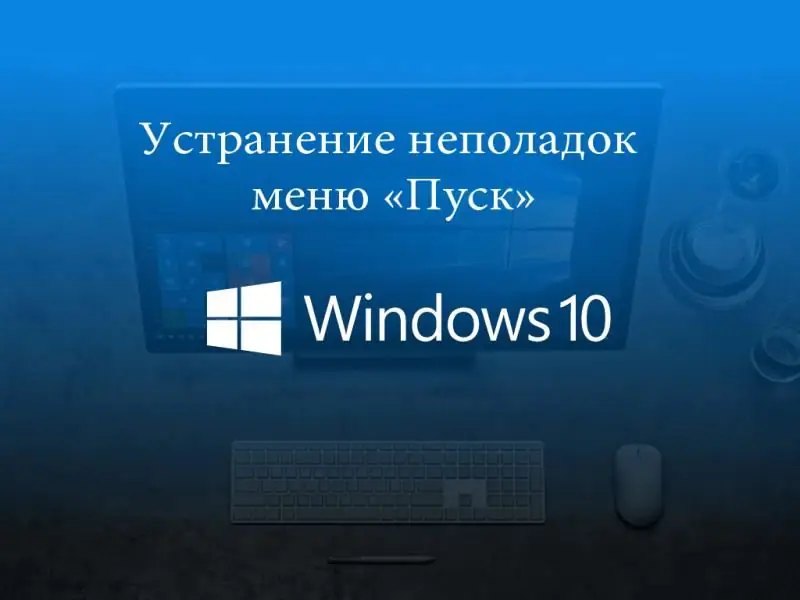
The most common problems in the "Start" menu on Windows 10. The reasons for the appearance. Solutions: universal and for specific cases
What To Do If Google Chrome Does Not Work - Reasons And Solutions For Problems With The Browser, Including When It Does Not Start
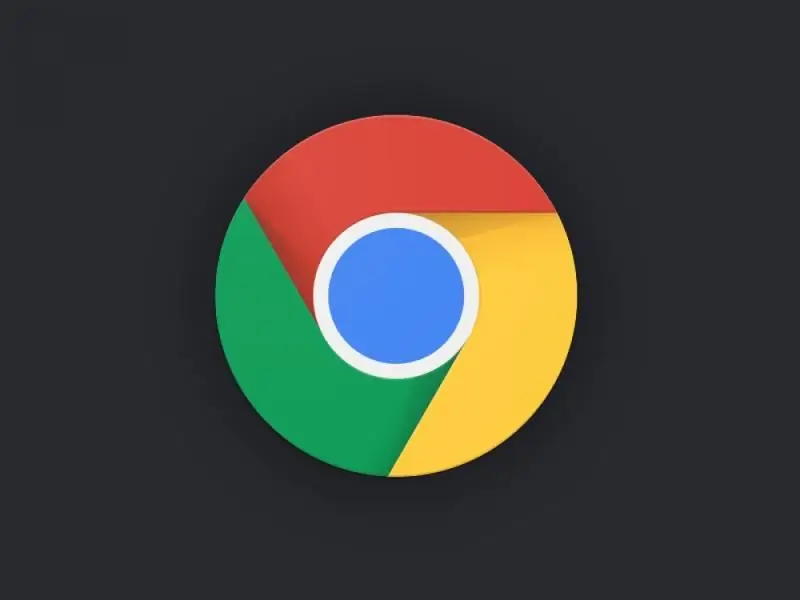
The reasons why Google Chrome does not work: does not start, pages do not open, a gray screen is displayed, and so on. Solutions with photos and videos
What To Do If Yandex Browser Does Not Open On A Computer - Why The Program Does Not Start, How To Make It Work

Why "Yandex Browser" does not open in Windows. Solution to the problem: disabling autorun, updating and reinstalling the browser, clearing the cache and registry
What To Do If Pages With Sites Do Not Open In The Browser, But The Internet Is Working At The Same Time - We Solve The Problem In Different Ways
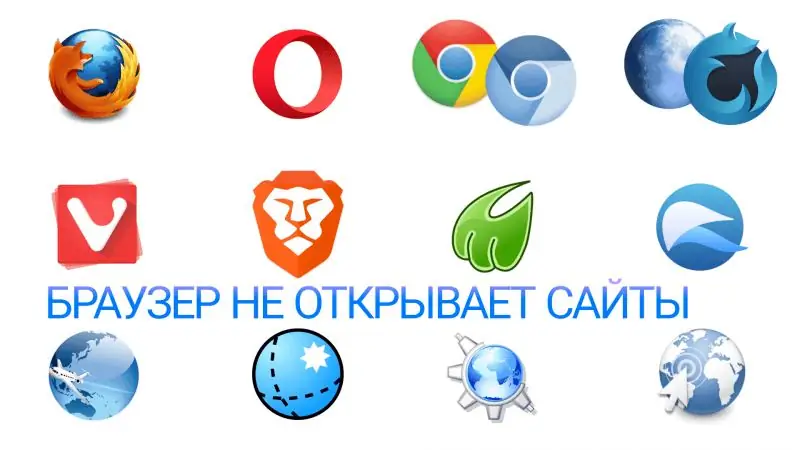
How to eliminate the inoperability of sites in the browser when the Internet is running. Correcting errors in the registry, changing DNS settings, removing plugins, etc
Why My Page Of The Odnoklassniki Site Does Not Open On The Computer: Reasons And Solutions

Why Odnoklassniki doesn't open. Ways to solve the problem. Manual configuration of the operating system and the use of special programs
